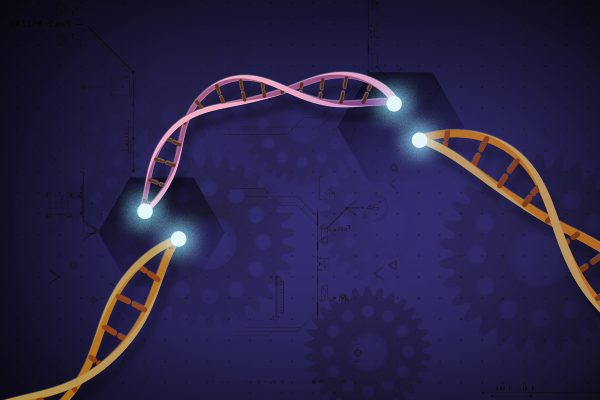Within the large, revolving doors of the hospital, through the blank white halls, lies the organ wing. Patients lie in their soft, cushiony beds, contemplating their future. Will they receive an organ donation on time? Even if their name is far down on the waiting list, even if they are estimated to have to wait for five more years, will they survive? One way or another, their life isn’t guaranteed.
Although the issue of organ shortage is one that hospitals and patients will face for many years to come, researchers are constantly trying to innovate new solutions to save lives. One of the most extreme ideas that holds potential is xenotransplantation — the transplantation of living cells, tissues or organs from one species to another. It is a highly controversial and incredibly risky process, but it may very well save millions of lives.
The roots of xenotransplantation can be traced back to ancient times dating as far back as the 3rd century BCE, when Indian physicians such as Sushruta used animal skin to repair human noses However, it wasn’t until the 20th century that scientific advancements paved the way for more sophisticated experimentation. In the mid-20th century, researchers began exploring the transplantation of pig kidneys into non-human primates, marking the initial steps into the world of cross-species organ transplantation.
While xenotransplantation surgeries have been performed in the past, they have only recently begun to progress. One of many instances took place at NYU Langone Health, where surgeons transplanted a genetically engineered pig kidney that functioned well in a recently deceased human, even after 32 days. This is the longest period that a gene-edited pig kidney has functioned in a human, and is a huge step in creating an alternative, sustainable supply of organs for transplant. NYU surgeons recently transplanted a second kidney, which tests show is maintaining normal conditions in the recently deceased human body.
Another instance took place in the Loma Linda University, where Baby Fae survived a transplant which provided her a new, healthy and, against all odds, a beating baboon heart. She originally had a lethal disease with a high mortality rate: hypoplastic left heart syndrome. Though the transplant gave her a little extra time, Baby Fae tragically passed away 21 days later due to heart failure as a result of the rejection of the new organ. She became the longest-living recipient of a cross-species heart.
Xenotransplantation does not always apply to transferring complete organs from one organism to another. For example, pig neuronal cells have been studied and hypothesized to be able to aid the brain in treating Parkinson’s disease. An experiment where doctors performed the transplantation proved that the patient suffering from Parkinson’s disease showed long-term (over seven months) graft survival (proper functioning of the cells), which is a huge breakthrough.
While it cannot be conducted in clinical trials yet, research has shown promising results and further experimenting can ensure safety during such procedures. Doctor Natalie Elkin, an optometrist, often does transplants including a piece of the heart — the pericardium — and a part of the eye — the sclera — in a procedure called glaucoma surgery. Essentially, this surgery helps repair one’s vision when they have glaucoma, a group of eye diseases that leads to damage of the optic nerve. She interacts with foreign tissue and performs careful procedures that relocate the required parts. When interviewed, she discussed the risks that transplanting organs often brings – depending on what organs are being transplanted, doctors may face a multitude of different challenges.
Dr. Elkin affirmed her thoughts on xenotransplantation for the future, and showed her strong support for the idea. “I think [xenotransplantation] is definitely possible. And especially this kind of transplant that I am telling you about, it doesn’t use the whole organ. Even if a small amount of tissue from another animal is extracted for use, it could work.”
However, she acknowledged that the key challenge in xenotransplantation lies in overcoming the immunological barriers between species. When an organ is transplanted from one species to another, the recipient’s immune system recognizes the foreign organ as a threat and launches an attack, often leading to rejection. This rejection can in turn lead to cancer, infections, and other harmful illnesses. To address this, scientists attempt to employ genetic engineering in order to modify the pig’s organs and make them less recognizable as foreign to the human immune system.
One crucial modification involves the removal of certain pig genes responsible for producing molecules that human immune systems may perceive as threats. Additionally, researchers aim to add human genes that produce proteins promoting tolerance, thereby reducing the likelihood of rejection. These genetic modifications are crucial to ensuring the compatibility of pig organs with the human body.
The future of xenotransplantation is rife with possibilities that could revolutionize the field of organ transplantation and address the persistent shortage of donor organs. One of the most promising developments is the use of gene-editing technologies like CRISPR-Cas9, which allows scientists to precisely modify the pig’s genome for optimal compatibility.

CRISPR-Cas9 is a revolutionary genetic engineering tool that enables geneticists and medical researchers to remove, add or alter sections of the DNA sequence. This technology has changed the field of xenotransplantation by enabling multiple, high-efficiency gene edits in animals like pigs, overcoming some of the key obstacles in this field. This has started the push of xenotransplants into the clinic and the global spotlight. The technology has also made it easier to create pig organs that are less likely to be attacked by human immune systems, although further research is still necessary to truly bring xenotransplantation into medicine.
Advancements in genetic engineering not only enhance the compatibility of pig organs but also open the door to the creation of “designer pigs” with organs specifically tailored for transplantation. These pigs could be engineered to produce organs with minimal risk of rejection, significantly improving the success rates of xenotransplants.
In addition to genetic modifications, ongoing research focuses on refining the transplantation process and developing innovative immunosuppressive drugs to prevent organ rejection. Scientists are exploring ways to regulate the recipient’s immune response more effectively, increasing their chances of long-term success after receiving xenotransplants.
While xenotransplantation holds great promise, it is not without its challenges and ethical considerations. Concerns about the potential transmission of infectious diseases from pigs to humans, known as xenozoonosis, have prompted rigorous safety assessments. Scientists are working diligently to ensure the safety of xenotransplants by implementing strict screening and monitoring processes. However, if the subject truly is pushed into the spotlight and is brought awareness to, the research process can certainly be sped up.
When asked about the risks of xenotransplantation, Doctor Elkin said that in her field, they’re “honestly minimal, because the tissues that we use are extremely well processed. They really control well for any kind of… infections. In general, they [those that prepare the organs] put it in a special kind of preservative.” She went on to describe that if the organs are prepared in the proper way, the risks of xenotransplantation can be largely reduced.
Ethical considerations also extend to the welfare of the donor animals. Striking a balance between meeting the growing demand for organs and ensuring the humane treatment of animals remains a crucial aspect of the ongoing discourse surrounding xenotransplantation. Researchers and ethicists are working collaboratively to establish guidelines that prioritize both human health and animal welfare.
Xenotransplantation represents a groundbreaking frontier in medical science, offering hope for a future where organ shortages no longer dictate the fate of patients in need of transplants. The journey from ancient attempts at animal tissue transplantation to the contemporary era of genetically engineered pigs is a testament to the perseverance of scientific inquiry.
As research and technology continue to advance, the prospects for successful xenotransplants brighten. While challenges and ethical considerations persist, the potential benefits of xenotransplantation in saving lives and improving the quality of life for countless individuals are undeniably compelling. As we navigate the complexities of this evolving field, the promise of xenotransplantation serves as a beacon of hope, lighting the way toward a healthier and more organ-abundant future.
Although the issue of organ shortage is one that hospitals and patients will face for many years to come, researchers are constantly trying to innovate new solutions to save lives. One of the most extreme ideas that holds potential is xenotransplantation — the transplantation of living cells, tissues or organs from one species to another. It is a highly controversial and incredibly risky process, but it may very well save millions of lives.
While xenotransplantation holds great promise, it is not without its challenges and ethical considerations.

